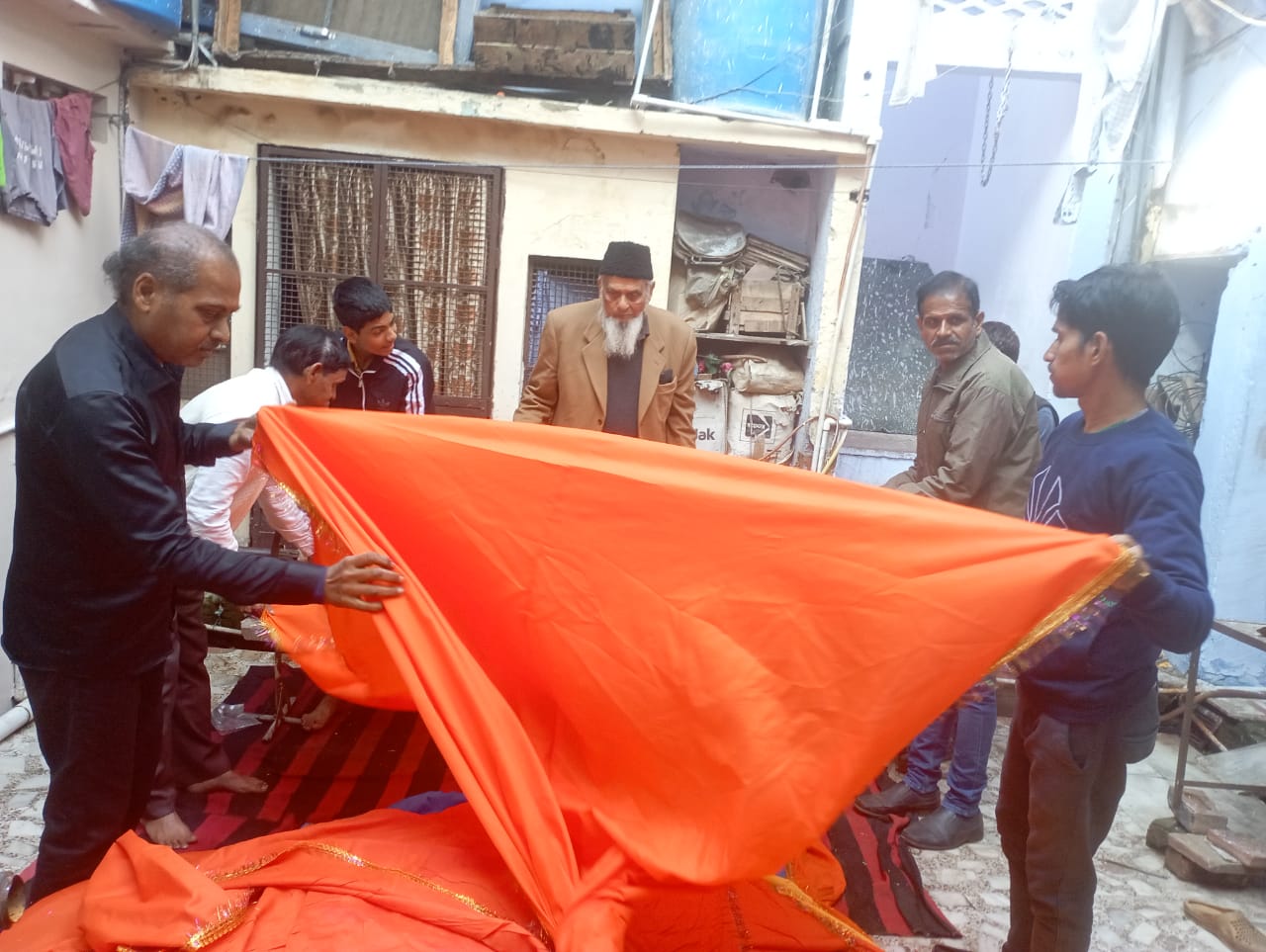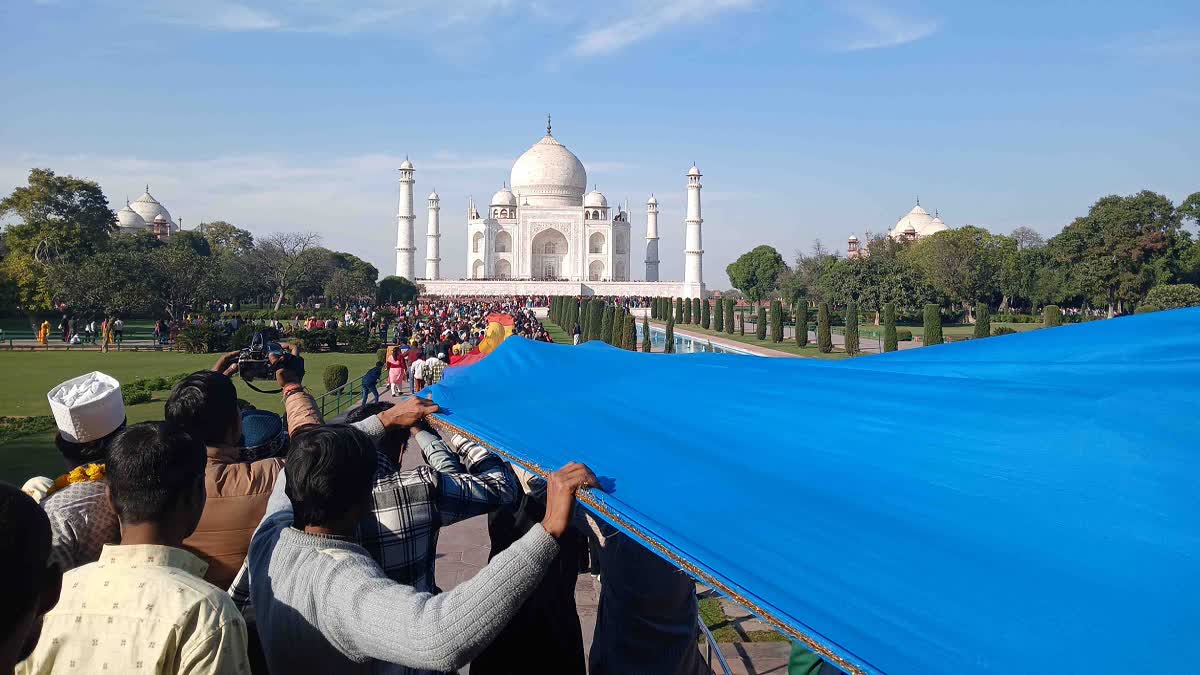Agra: The 370th death anniversary cum Urs of Mughal emperor Shah Jahan began at the iconic Taj Mahal here on Sunday. The event marked the start of a three-day celebration, which is being attended by tens of thousands of devotees and tourists from across the world, honouring the life and legacy of Shah Jahan.
The Urs commenced with a symbolic bath ritual, ghusl of graves, at the Taj Mahal, followed by traditional ceremonies including special prayers and floral offerings.
On Monday, ceremonies include the application of sandalwood paste (sandal), Quranic recitations, and a traditional qawwali session, which will take place till the monument closes for the day.
The ‘Urs’ will conclude on Tuesday with the “Khatm-e-Qur’an” (complete recitation of the holy Qur’an), langar (a community feast), and the ceremonial chadarposhi (offering of ceremonial cloth) on the graves.

This year, a 1,640-meter-long, locally made, rainbow-coloured chadar (ceremonial cloth) will be offered at Shah Jahan's tomb, which symbolises unity and communal harmony. The chadar was prepared by people from different faiths and communities, including Hindus, Muslims, Sikhs, and Christians.
The preparation for the chadar started 43 years ago by the Khuddam-e-Roza Committee, said the organisers. “This chadar belongs to the whole of India. It represents the spirit of harmony and respect for all religions,” said Tahiruddin Tahir, president of the Khuddam-e-Roza Committee.
The chadar has grown in length over the years, from 100 meters initially to 1,640 meters currently.
More About Annual ‘Urs’
This Urs is celebrated annually according to the Islamic lunar calendar on the 25th, 26th, and 27th of the month of Rajab, the seventh month of the Islamic calendar, honouring Mughal Emperor Shah Jahan, who built the Taj Mahal in memory of his beloved wife, Mumtaz Mahal.
The Taj Mahal is a UNESCO World Heritage Site and one of the Seven Wonders of the Modern World. It attracts millions of visitors each year, with organisers expecting tens of thousands of visitors, including devotees, historians, and tourists, eager to witness the monument’s splendour as well as the spiritual rites performed in the emperor's memory during the Urs.
Security Arrangements
Meanwhile, authorities have urged visitors to follow security guidelines and cooperate with the staff during the Urs to maintain the sanctity and safety of the historic site.
Special security measures have been put in place to ensure smooth proceedings, especially given the ongoing debates over the Taj Mahal’s history.
Officials from the Archaeological Survey of India (ASI), Central Industrial Security Force (CISF), and local police are working in coordination to manage the crowds. Tobacco products, huge drums, flags, banners, and sharp objects are all prohibited on the premises.
Additional personnel are also stationed at the monument’s gates and along the Yamuna River bank to regulate crowds and maintain safety.
Read More



